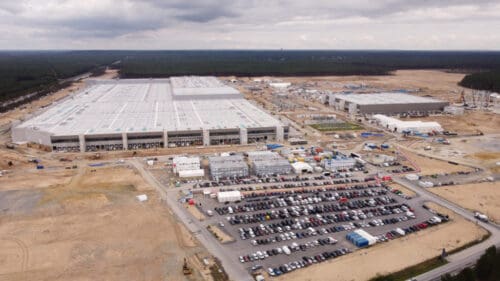Michael Wolf, Penig, CC BY-SA 3.0 https://creativecommons.org/licenses/by-sa/3.0, via Wikimedia Commons
In 2019, the European Commission presented an ambitious strategy for sustainability – the European Green Deal, which aspires to make Europe the first climate-neutral continent by the year 2050. Along with restoring a healthy environment, the goals of this extensive plan include protecting wildlife and generating new economic opportunities. The Green Deal is composed of a series of sustainability milestones across industries as varied as agriculture, textiles, construction, and transportation, as well as energy.
An Increased Demand for Sustainable, Clean Energy Solutions
Better energy solutions are a key aspect of the Green Deal. Its initiatives seek to establish a reliable and affordable energy supply, build a fully integrated EU (European Union) energy market, and prioritize overall energy efficiency. With energy production and use accounting for most of Europe’s greenhouse gas emissions, the transition to renewable, efficient energy sources is a critical part of the European Green Deal.
In particular, the European Green Deal highlights the need to reduce CO2 emissions. Transportation represents a sizable portion of this problem, as up to 25% of the EU’s greenhouse gas emissions result from transportation. To further speed up the adoption of electric vehicles (EVs), which boast zero emissions, the EU has proposed a ban on new fossil-fuel cars from 2035.
These Green Deal initiatives compound the pressure of heightened public interest in environmental concerns and a growing demand for EVs. The increased emphasis on sustainable energy systems means an even greater demand for the research and production facilities that support the electric vehicle industry and other renewable energy solutions.
The Rise of the Gigafactory in Europe
One solution to this growing need is the introduction and propagation of gigafactories. As indicated by their name, these production facilities dwarf the size of typical factories and are designed to meet massive research and production needs. Tesla, whose CEO is credited with the invention of the term “gigafactory,” started construction on the very first one in June 2014 near Sparks, Nevada. At only 30% complete, the facility has 5.3 million square feet of operational space and is intended to supply lithium-ion batteries for a planned production of 500,000 cars per year.
Other gigafactory projects have followed, looking to address the current and anticipated demand for EVs and other sustainable energy solutions – particularly in Europe. As part of its mission to develop the world’s greenest battery cell, Northvolt established the battery gigafactory Northvolt Ett in Sweden. In Berlin, Germany, Tesla plans to complete its first Europe-based gigafactory this year, which will manufacture both battery cells and vehicles.
These two macro factories are just the beginning of gigafactory development in the countries of Europe. More than 20 European gigafactory projects are planned for completion over the next few years, with a focus on battery cell technology. As planned, these facilities would provide more than 1,000 GWh (gigawatt hours) of battery capacity by 2030, staying ahead of the anticipated demand based on current policy. Acceleration of standards in the coming years would bring these demand and capability figures even closer. Even with their massive production capabilities, by 2040, these gigafactories may fall short of the projected EV battery demand for Europe.
Arbin’s Response to the Needs of Gigafactories
As part of our aim to support those moving the battery industry forward, Arbin Instruments is committed to battery development in Europe. Arbin is working to address the increasing demand for battery research and production in two key ways: cycler and data management solutions for larger operations and a dedicated, growing Arbin Europe team.
Production facilities the size of the latest gigafactories require efficient management of both battery test equipment and the results data that testing produces. Arbin’s Central Monitor and Control Solution (CMCS) allows for control of multiple battery testers from a single PC, including the ability to start, stop, and resume testing. The CTI (Console TCP Interface) Interface also allows for third-party control of Arbin battery test equipment. For data management, our Central Data Solution (CDS) offers the ability to backup data to a central network or cloud-based server for use in dedicated analysis programs.
Our dedicated Arbin Europe office is also positioned to help meet the continent’s increasing energy research needs. The team’s knowledge of the battery industry in Europe allows the team to effectively address the unique needs of each organization in the countries that they serve. As both the Sales and Support Teams have expanded, new team members allow Arbin Europe to assist customers more efficiently in designing and implementing complete testing systems that meet their specifications.
Conclusion
Growing demand for electric vehicles and other clean energy solutions in Europe has significantly increased the scale of battery testing and production. The resulting rise of gigafactories requires the kind of reliable, precision testing equipment and effective management solutions that Arbin Instruments provides, aided by the expertise of the Arbin Europe team. To learn more about Arbin Instruments or begin building your testing system, contact our sales team today.


